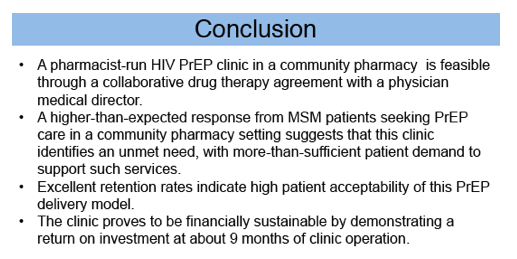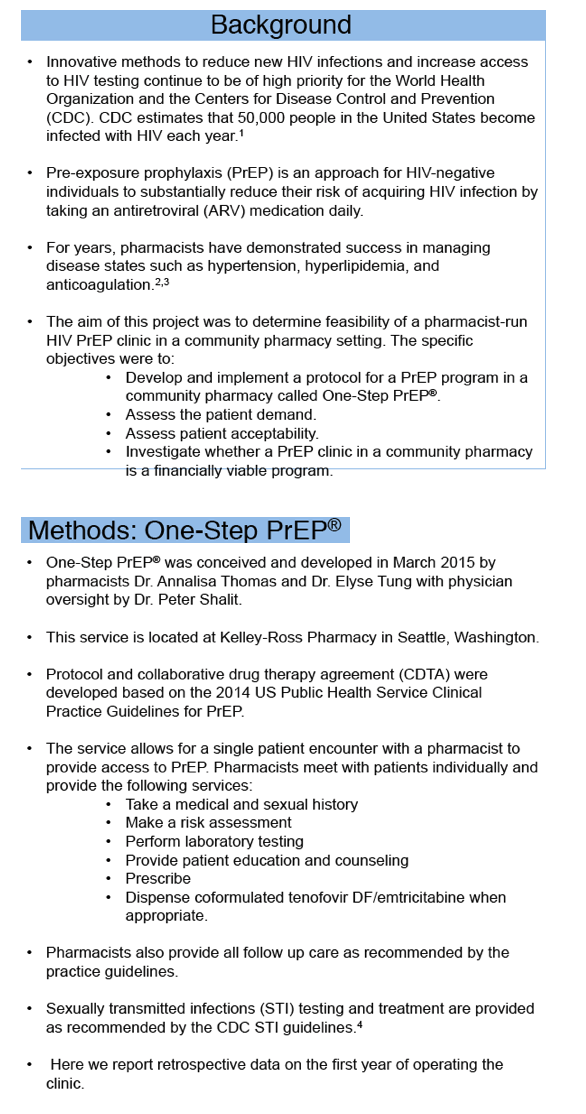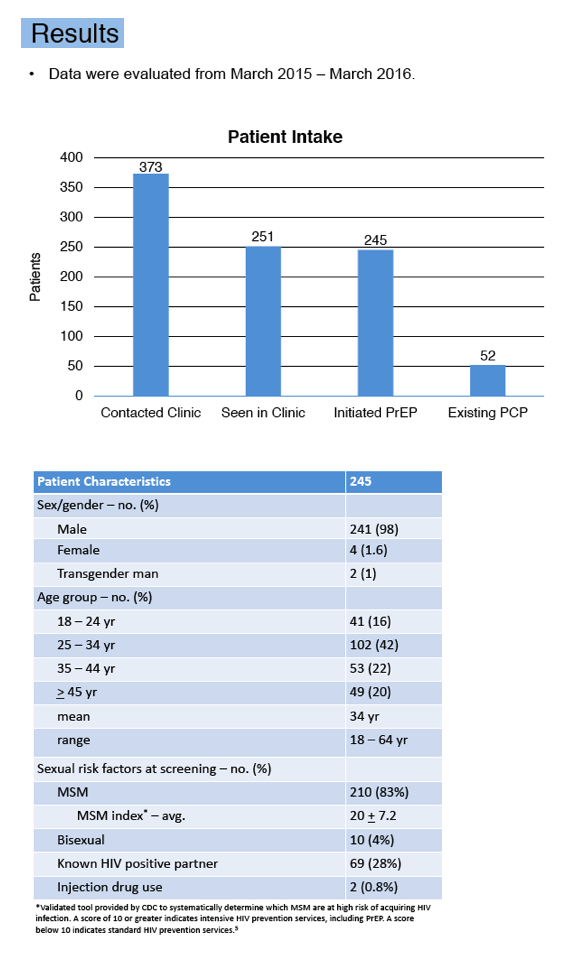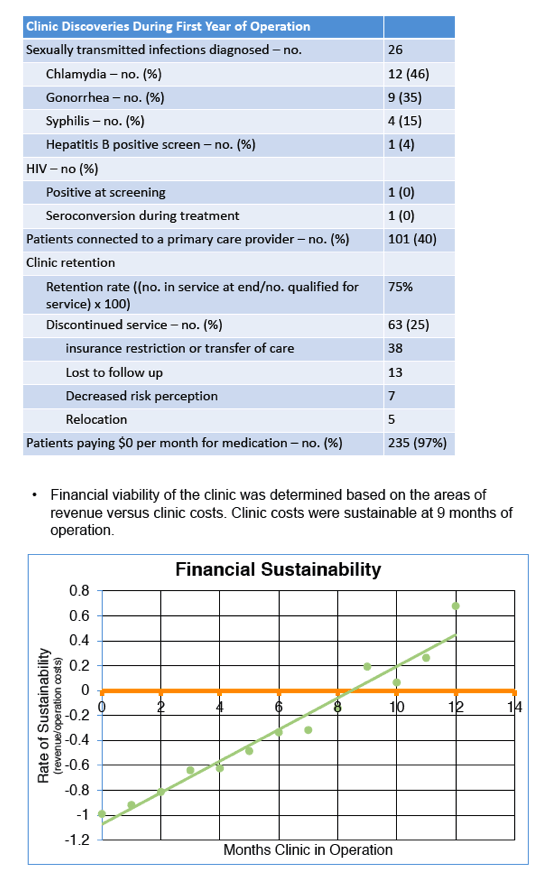 |
 |
 |
| |
Feasibility of a pharmacist-run HIV PrEP clinic in a community pharmacy setting
|
| |
| |
Reported by Jules Levin
CROI 2017 Seattle WA
Elyse Tung, PharmD, BCACP1; Annalisa Thomas, PharmD1; Allyson Eichner, PharmD1; Peter Shalit, MD, PhD, FACP, AAHIVS2
1Kelley-Ross Pharmacy Group and 2University of Washington School of Medicine
Webcast Link: http://www.croiwebcasts.org/p/2017croi/croi33408

Abstract Body:
Reduction of new HIV infections and increased access to HIV testing continue to be of high priority for health organizations. For years, pharmacists have demonstrated success in managing disease states, such as hypertension, via clinic-based protocols. Management of HIV pre-exposure prophylaxis (PrEP) involves a similar level of care as these other proven pharmacist-managed protocols. By collaborating with a local HIV primary care clinic, we created an innovative pharmacist-managed HIV PrEP clinic in a community pharmacy setting called One-Step PrEP™.
One-Step PrEP™ was created in March 2015 under physician oversight with a collaborative drug therapy agreement (CDTA). This service is located at Kelley-Ross Pharmacy in Seattle, Washington. One-Step PrEP™ allows for a single patient encounter to provide access to PrEP. Pharmacists meet with patients individually, take a medical and sexual history, make a risk assessment, perform laboratory testing, provide patient education, and prescribe and dispense tenofovir DF/emtricitabine when appropriate. Pharmacists also provide all follow up care as recommended by the practice guidelines. Here we report data on the first year of operating the clinic.
From March 2015 through March 2016, 373 individuals sought PrEP services from One-Step PrEP™. Of those, 251 (67%) were evaluated in person, and 57 (23%) reported having a primary care provider. Among those seen in clinic, 245 (98%) initiated PrEP, and 210 (84%) identified as men who have sex with men (MSM). The mean age was 34 years (range 18-64 years). A total of 26 diagnoses of bacterial sexually-transmitted infections were made, and there was one HIV seroconversion. A retention rate of 75% was seen during the first year of operation. A majority of patients (235 or 96%) paid $0 per month for their PrEP medication. Financial viability of the clinic was determined based on the areas of revenue versus clinic costs. Initial startup costs were recouped at 9 months of clinic operations.
We have found that a pharmacist-run HIV PrEP clinic in a community pharmacy is logistically feasible and financially viable. We observed a higher-than-expected response from MSM patients seeking PrEP care in a community pharmacy setting. The high retention rate indicates that patients find value in our service. The One-Step PrEP™ clinic model proves to be financially sustainable by demonstrating a return on investment in less than one year of clinic operation.



REFERENCES
1.Centers for Disease Control and Prevention. Preexposureprophylaxis for the prevention of HIV infection in the United States: A clinical practice guideline. 2014; http://www.cdc.gov/hiv/pdf/PrEPguidelines2014.pdf. Accessed January 15, 2015.
2.V Santschi, A Chiolero, B Burnand, et al. Impact of Pharmacist Care in the Management of Cardiovascular Disease Risk Factors. Arch Intern Med. 2011;171(16):1441-1453
3.CA Bong, CL Raehl. Pharmacist-Provided Anticoagulation Management in United States Hospitals: Death Rates, Length of Stay, Medicare Charges, Bleeding Complications, and Transfusions. Pharmacotherapy. 2004;24(8):953–963
4.Centers for Disease Control and Prevention. Sexually transmitted diseases treatment guidelines. MMWR RecommRep 2015;64(No. 3); https://www.cdc.gov/std/tg2015/tg-2015-print.pdf. Accessed July 01, 2015.
5.Centers for Disease Control and Prevention. Preexposureprophylaxis for the prevention of HIV infection in the United States: Clinical providers’ supplement. 2014; https://www.cdc.gov/hiv/pdf/PrEPProviderSupplement2014.pdf. Accessed January 15, 2015.
|
| |
|
 |
 |
|
|